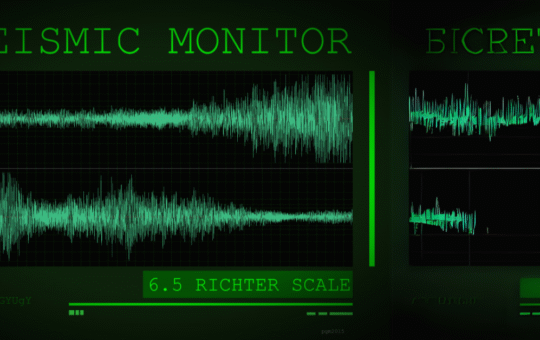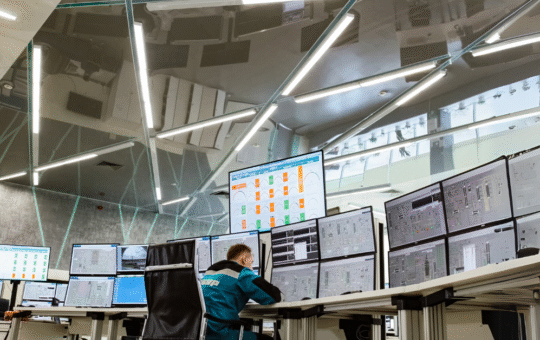
Level 3 Certification in Non-Destructive Testing (NDT) in Oil and Gas
- Technical Expertise: Master cutting-edge NDT methods like ultrasonic, radiographic, and magnetic testing.
- Safety Enhancement: Learn to detect flaws and prevent catastrophic failures.
- Industry Recognition: Gain a globally respected certification for career advancement.
- Hands-On Training: Apply theoretical knowledge to real-world NDT challenges.
- Compliance Knowledge: Stay updated with international safety and inspection standards.
- Understand the principles, techniques, and applications of NDT in oil and gas operations.
- Identify and evaluate defects in pipelines, pressure vessels, and storage tanks.
- Operate advanced NDT equipment and interpret test results.
- Ensure compliance with international inspection and safety standards.
- Develop inspection plans and reports for oil and gas facilities.
- Implement NDT as a part of preventive maintenance and quality assurance programs.
- Introduction to Non-Destructive Testing (NDT)
- Overview of NDT and its importance in the oil and gas sector.
- Key principles and methodologies of NDT.
- NDT Techniques and Applications
- Ultrasonic Testing (UT): High-frequency sound waves for flaw detection.
- Radiographic Testing (RT): X-rays and gamma rays for internal inspection.
- Magnetic Particle Testing (MPT): Detecting surface and near-surface discontinuities.
- Dye Penetrant Testing (DPT): Locating surface cracks and defects.
- Eddy Current Testing (ECT): Identifying defects in conductive materials.
- Material Defect Analysis
- Common defects in oil and gas equipment and their implications.
- Methods to assess and categorize defects.
- NDT Equipment and Operation
- Overview of NDT tools and calibration processes.
- Practical operation and troubleshooting of equipment.
- Safety Standards and Compliance
- Adhering to ASNT, API, and ISO standards.
- Legal and regulatory requirements for NDT in oil and gas.
- Advanced Applications of NDT
- Pipeline integrity management.
- Inspecting offshore and subsea components.
- Report Writing and Data Interpretation
- Documenting and presenting NDT findings.
- Statistical methods for interpreting results.
- Case Studies and Practical Exercises
- Real-world scenarios in oil and gas facilities.
- Hands-on training and assessments.
- NDT Technician/Inspector
- Pipeline Integrity Specialist
- Quality Assurance Engineer
- Maintenance Supervisor in Oil and Gas
- Asset Integrity Manager
- Specialized Curriculum: Focused on NDT applications for oil and gas operations.
- Expert Trainers: Learn from certified professionals with extensive industry experience.
- Hands-On Approach: Practical training on advanced NDT equipment.
- Flexible Study Options: Suitable for working professionals.
- Industry Compliance: Aligned with global standards and certifications.
Study Units
- Introduction to Non-Destructive Testing (NDT)
- Overview of NDT and its importance in the oil and gas sector.
- Key principles and methodologies of NDT.
- NDT Techniques and Applications
- Ultrasonic Testing (UT): High-frequency sound waves for flaw detection.
- Radiographic Testing (RT): X-rays and gamma rays for internal inspection.
- Magnetic Particle Testing (MPT): Detecting surface and near-surface discontinuities.
- Dye Penetrant Testing (DPT): Locating surface cracks and defects.
- Eddy Current Testing (ECT): Identifying defects in conductive materials.
- Material Defect Analysis
- Common defects in oil and gas equipment and their implications.
- Methods to assess and categorize defects.
- NDT Equipment and Operation
- Overview of NDT tools and calibration processes.
- Practical operation and troubleshooting of equipment.
- Safety Standards and Compliance
- Adhering to ASNT, API, and ISO standards.
- Legal and regulatory requirements for NDT in oil and gas.
- Advanced Applications of NDT
- Pipeline integrity management.
- Inspecting offshore and subsea components.
- Report Writing and Data Interpretation
- Documenting and presenting NDT findings.
- Statistical methods for interpreting results.
- Case Studies and Practical Exercises
- Real-world scenarios in oil and gas facilities.
- Hands-on training and assessments.
After completing this certification, learners will be able to:
- Understand the principles, techniques, and applications of NDT in oil and gas operations.
- Identify and evaluate defects in pipelines, pressure vessels, and storage tanks.
- Operate advanced NDT equipment and interpret test results.
- Ensure compliance with international inspection and safety standards.
- Develop inspection plans and reports for oil and gas facilities.
- Implement NDT as a part of preventive maintenance and quality assurance programs.
The Level 3 Certification in Non-Destructive Testing (NDT) in Oil and Gas is tailored for professionals and those looking to advance their careers in the oil and gas industry, specifically in the inspection and maintenance of critical infrastructure. This certification is ideal for:
NDT Technicians and Inspectors
Experienced professionals who want to deepen their knowledge of advanced NDT techniques and take on more responsible roles in testing, analysis, and reporting.
Pipeline Integrity Specialists
Professionals responsible for ensuring the safety and integrity of pipelines, storage tanks, and pressure vessels through advanced inspection techniques.
Quality Assurance Engineers
Engineers involved in quality control and maintenance programs who wish to gain specialized knowledge of NDT methods to enhance the reliability of equipment.
Maintenance Supervisors
Supervisors in oil and gas facilities who are responsible for maintaining the integrity of assets and preventing failures through effective NDT practices.
Asset Integrity Managers
Managers in charge of overseeing the performance, safety, and integrity of equipment and infrastructure in oil and gas facilities, who need expertise in non-destructive testing methods.
Engineers and Technicians in Offshore/Seismic Operations
Those working in offshore and subsea environments, where advanced NDT techniques are essential for inspecting critical components like pipelines, risers, and subsea structures.
Safety and Compliance Officers
Individuals responsible for ensuring that operations comply with international standards for safety and inspection, looking to specialize in NDT and integrity management.
Our assessment process is designed to ensure every learner achieves the required level of knowledge, skills, and understanding outlined in each course unit.
Purpose of Assessment
Assessment helps measure how well a learner has met the learning outcomes. It ensures consistency, quality, and fairness across all learners.
What Learners Need to Do
Learners must provide clear evidence that shows they have met all the learning outcomes and assessment criteria for each unit. This evidence can take different forms depending on the course and type of learning.
Types of Acceptable Evidence
Assignments, reports, or projects
Worksheets or written tasks
Portfolios of practical work
Answers to oral or written questions
Test or exam papers
Understanding the Structure
Learning outcomes explain what learners should know, understand, or be able to do.
Assessment criteria set the standard learners must meet to achieve each learning outcome.
Assessment Guidelines
All assessment must be authentic, current, and relevant to the unit.
Evidence must match each assessment criterion clearly.
Plagiarism or copied work is not accepted.
All learners must complete assessments within the given timelines.
Where applicable, assessments may be reviewed or verified by internal or external quality assurers.
Full learning outcomes and assessment criteria for each qualification are available from page 8 of the course handbook.
Top Courses
Related Courses
Let's Get in touch
Deleting Course Review
Course Access
This course is password protected. To access it please enter your password below:



